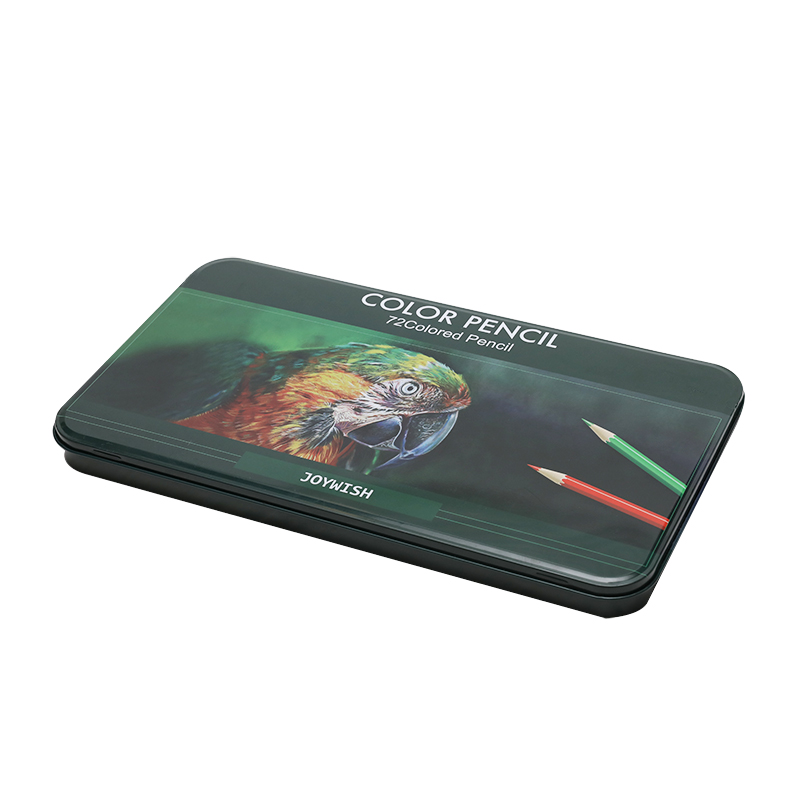

Principles of Printing Tinplate printing also uses the […]
Principles of Printing
Tinplate printing also uses the physical properties of water and ink to repel each other. With the help of printing pressure, the printing plate graphics and text are transferred to the tinplate via a blanket, which belongs to the principle of offset printing. Because tinplate has special physical and chemical properties D and the reprocessing performance of printed matter, its printing process is quite different from ordinary offset printing.

Ink requirements
(1) The ink is required to have good adhesion and mechanical properties
Since tinplate printed matter will eventually be made into food cans, toys, metal photo frames, and barrels and cans of chemical products, it needs to be cut, bent and stretched. Therefore, printing inks are required to have good adhesion to tinplate and corresponding machinery. performance. In order to improve the ink adhesion, the tinplate needs to be white painted before printing. White is the base color of all pictures, with high brightness. After adding other high-energy hues, the brightness of each hue can be increased to form a color gradation.
(2) Requirements for white ink
The surface of the tinplate is silvery white (or yellow) with metallic luster. Before printing the color graphics, the surface needs to be painted or printed white. Due to the limitation of the ink coverage, the monochrome machine often needs to be printed twice, and its whiteness Up to 75%. Whiteness is an important indicator of the quality of tinplate printing products. The white ink is required to have a good bonding force with the primer, and it will not yellow after repeated high-temperature baking, and will not fade after high-temperature steaming. Prime the tinplate to increase the adhesion to the tinplate and have a good adhesion to the white ink. Commonly used primers are epoxy amine-based, with light color, no yellowing, no aging after repeated baking, and good flexibility and impact resistance.
(3) Requirements for color ink
In addition to a certain degree of water resistance, tinplate printing color inks also need special requirements. Since the surface of tinplate does not penetrate water and solvents, it needs to be baked and dried, so the ink should be heat curing type. High requirements for pigments' tinting strength and durability. In addition to the basic properties of general offset printing inks, iron printing inks should also have heat resistance, strong ink film adhesion, impact resistance, good hardness, cooking resistance and light resistance according to the characteristics of iron printing.
(4) Drying process of ink
In tinplate printing production, the drying of ink is a complex physical and chemical reaction process. It is necessary to reasonably control the ink drying speed and master the physical and chemical mechanism of ink drying in order to effectively carry out fast printing operations and ensure product quality. Drying the ink too fast will reduce the normal transfer performance of the ink and affect the normal production; it will cause the imprint to be weak, the ink color will be light, the printing plate and the ink roller surface will dry up, which will hinder the ink during the transfer; make the printing plate graphics dry. The layer expands outward; the excessive amount of desiccant will increase the ink absorption and the blank part will become dirty. The ink drying too slowly can cause overprinting difficulties, adhesion, adhesion, etc., and the firmness will be reduced; it is easy to cause scratches during the conveying process. Therefore, the drying speed of the ink should be appropriate, too fast or too slow is unfavorable.
(5) Special structure of printing equipment
Due to the different substrates, the auxiliary mechanism of the tinplate printing press is also different from the paper offset printing press. Tinplate is insoluble in water and does not absorb solvents, so the printing ink needs to be baked at a high temperature to make the solvent volatilize and solidify the conjunctiva. Therefore, a drying room is generally required in the printing process device. The entire tinplate printing automatic line is generally more than 50 meters long, which is precise and large. In addition, the tinplate printing machine is controlled by magnets for dividing and double sheets. The high hardness of the tinplate material also determines that the advanced continuous iron conveying structure cannot be used in the printing process. The structure of the pushing, level and stacking parts are different. Offset press for printing paper.